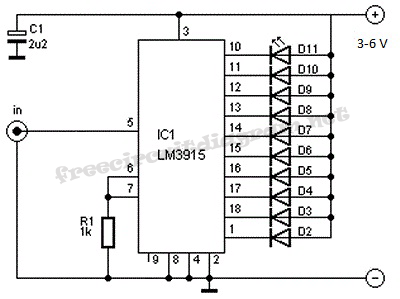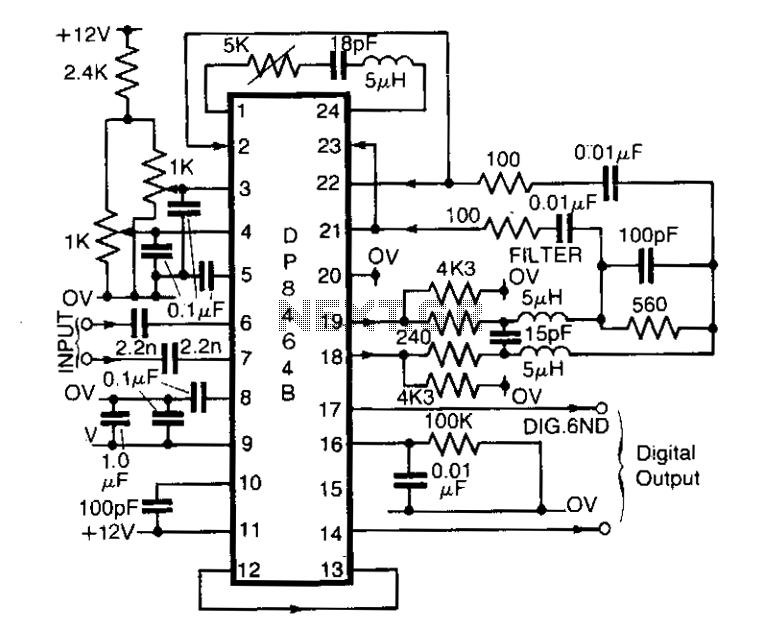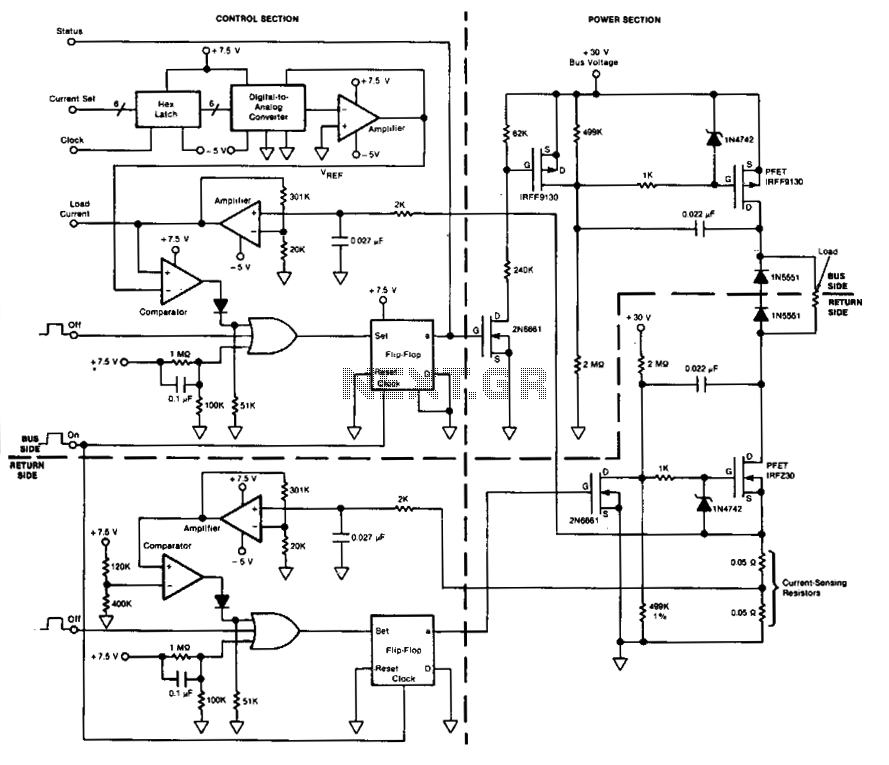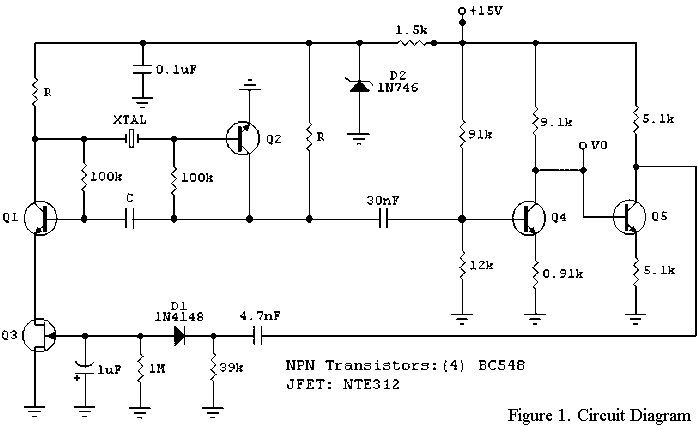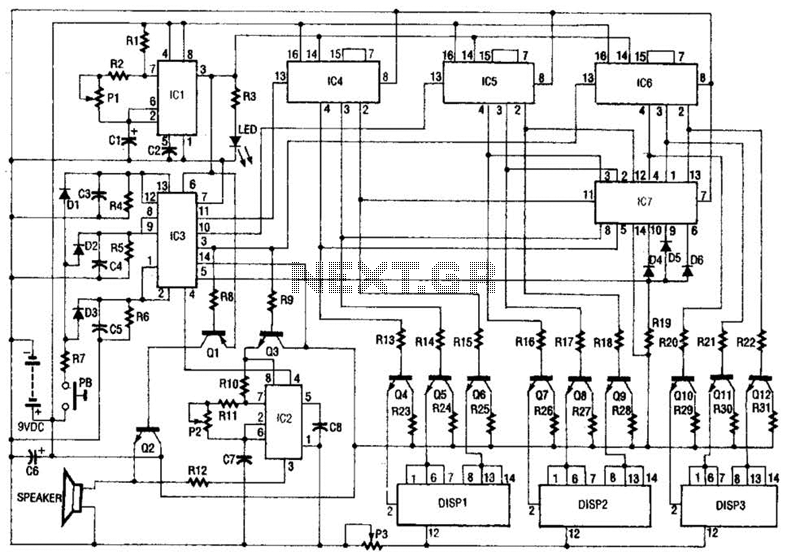
simple frequency counter circuit
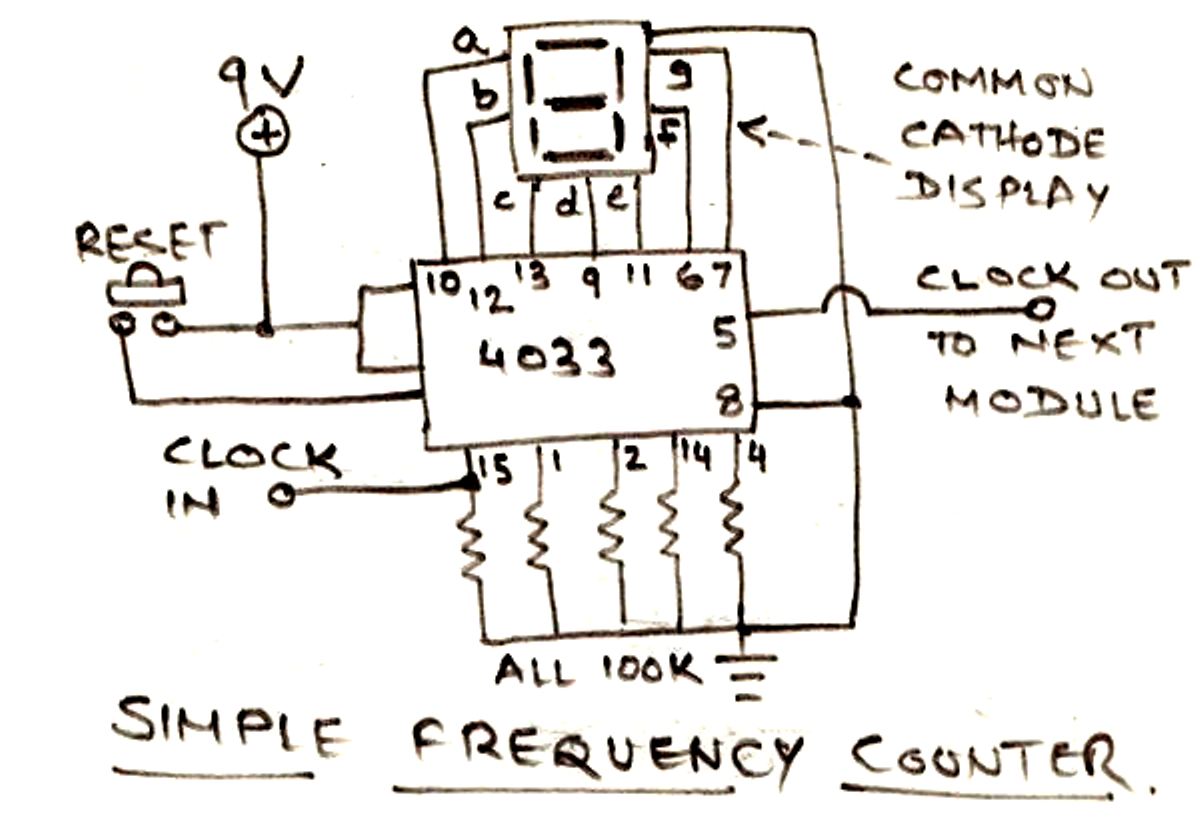
The circuit illustrated below is designed for measuring frequency in Hertz (Hz). It is straightforward to construct, utilizing a single IC 4033 and a common cathode display as the main components. For measuring higher frequencies, typically in the range of two or three digits, multiple modules can be connected in series as described. The IC features an internal binary-coded decimal (BCD) to 7-segment translator, which converts input pulses directly into readable numerical displays on the connected display unit. A single IC 4033 can manage only one common cathode display, allowing the circuit to display numbers from 0 to 9 in response to the corresponding clock signals applied at its input. The IC can be easily reset at any time. For instance, if six clock pulses are applied and the display reads 6, it can be reset to zero by pressing the designated push button. To enable counting to two, three, or four digits, additional modules can be integrated as shown in the diagram. The outputs should be connected as follows: pin #5 of the first module to the clock input of the next module, pin #5 of the second module to the clock input of the third module, and so forth.
The frequency measurement circuit utilizes the CD4033, a BCD to 7-segment decoder/driver IC, which is ideal for applications requiring frequency counting and display. The IC operates by receiving clock pulses, which correspond to the frequency being measured. Each clock pulse increments the displayed number, with the internal BCD to 7-segment decoder translating the binary count into a format suitable for the display.
The common cathode display is connected to the output pins of the CD4033, which drive the segments of the display to represent the current count. The reset functionality is facilitated by a push button connected to the reset pin of the IC, allowing the user to clear the current count and start anew. This feature is particularly useful in applications where the frequency may fluctuate, enabling quick resets for accurate measurements.
For applications requiring the measurement of higher frequencies, the modular approach allows for scalability. By cascading additional CD4033 ICs, the circuit can count and display frequencies up to three or four digits. The output of the first module is connected to the clock input of the subsequent module, ensuring that each module counts in synchronization. This configuration allows for a comprehensive frequency measurement solution, adaptable to various needs without significant redesign.
Overall, this frequency measurement circuit is an effective and versatile tool for electronic projects, providing clear numerical outputs for varying frequency inputs while maintaining ease of use and expandability through modular design.The circuit shown below can be used for measuring frequency or Hz. The IC is very simple to make andutilizesjust a single IC 4033 and a common cathode display as the mainingredients. If higher frequencies in the the order of two or threedigitsare required to be measured, then simple the number of modules can be connected in series as described
. The IC has an internal BCd to 7 segment translator which directly converts the pulses at its input to readable numerical bars at the connected display block. A single IC 4033 is able to handle only one common cathode display block and therefore the shown circuit is able to show numbers from 0 to 9 in response to the relevant clocks applied at its input.
The IC may be easily reset at any point. For example suppose 6 clocks were applied at the input and the the display now reads 6, it can be reverted to zero simply by pressing the shown push button, if needed. In order to make the counter able to count to two digit or 3 digit or 4 digit etc. just include integrate the relevant number of modules as shown in the diagram and connect their outputs in the following manner: Connect pin #5 of the first module to the clock input of the next module and connect pin #5 of the second module to clock input of the third module and so on.
🔗 External reference
The frequency measurement circuit utilizes the CD4033, a BCD to 7-segment decoder/driver IC, which is ideal for applications requiring frequency counting and display. The IC operates by receiving clock pulses, which correspond to the frequency being measured. Each clock pulse increments the displayed number, with the internal BCD to 7-segment decoder translating the binary count into a format suitable for the display.
The common cathode display is connected to the output pins of the CD4033, which drive the segments of the display to represent the current count. The reset functionality is facilitated by a push button connected to the reset pin of the IC, allowing the user to clear the current count and start anew. This feature is particularly useful in applications where the frequency may fluctuate, enabling quick resets for accurate measurements.
For applications requiring the measurement of higher frequencies, the modular approach allows for scalability. By cascading additional CD4033 ICs, the circuit can count and display frequencies up to three or four digits. The output of the first module is connected to the clock input of the subsequent module, ensuring that each module counts in synchronization. This configuration allows for a comprehensive frequency measurement solution, adaptable to various needs without significant redesign.
Overall, this frequency measurement circuit is an effective and versatile tool for electronic projects, providing clear numerical outputs for varying frequency inputs while maintaining ease of use and expandability through modular design.The circuit shown below can be used for measuring frequency or Hz. The IC is very simple to make andutilizesjust a single IC 4033 and a common cathode display as the mainingredients. If higher frequencies in the the order of two or threedigitsare required to be measured, then simple the number of modules can be connected in series as described
. The IC has an internal BCd to 7 segment translator which directly converts the pulses at its input to readable numerical bars at the connected display block. A single IC 4033 is able to handle only one common cathode display block and therefore the shown circuit is able to show numbers from 0 to 9 in response to the relevant clocks applied at its input.
The IC may be easily reset at any point. For example suppose 6 clocks were applied at the input and the the display now reads 6, it can be reverted to zero simply by pressing the shown push button, if needed. In order to make the counter able to count to two digit or 3 digit or 4 digit etc. just include integrate the relevant number of modules as shown in the diagram and connect their outputs in the following manner: Connect pin #5 of the first module to the clock input of the next module and connect pin #5 of the second module to clock input of the third module and so on.
🔗 External reference
Warning: include(partials/cookie-banner.php): Failed to open stream: Permission denied in /var/www/html/nextgr/view-circuit.php on line 713
Warning: include(): Failed opening 'partials/cookie-banner.php' for inclusion (include_path='.:/usr/share/php') in /var/www/html/nextgr/view-circuit.php on line 713
